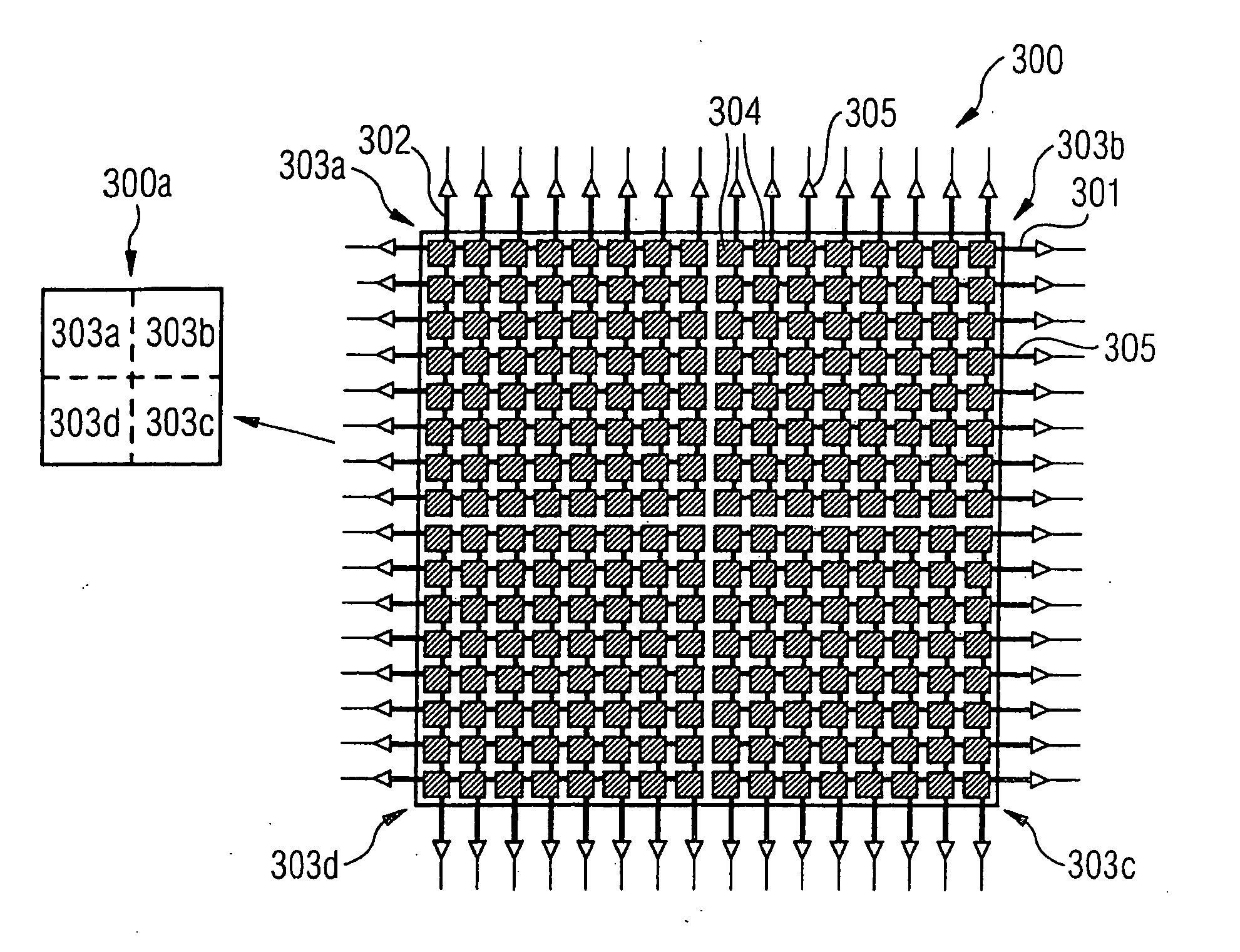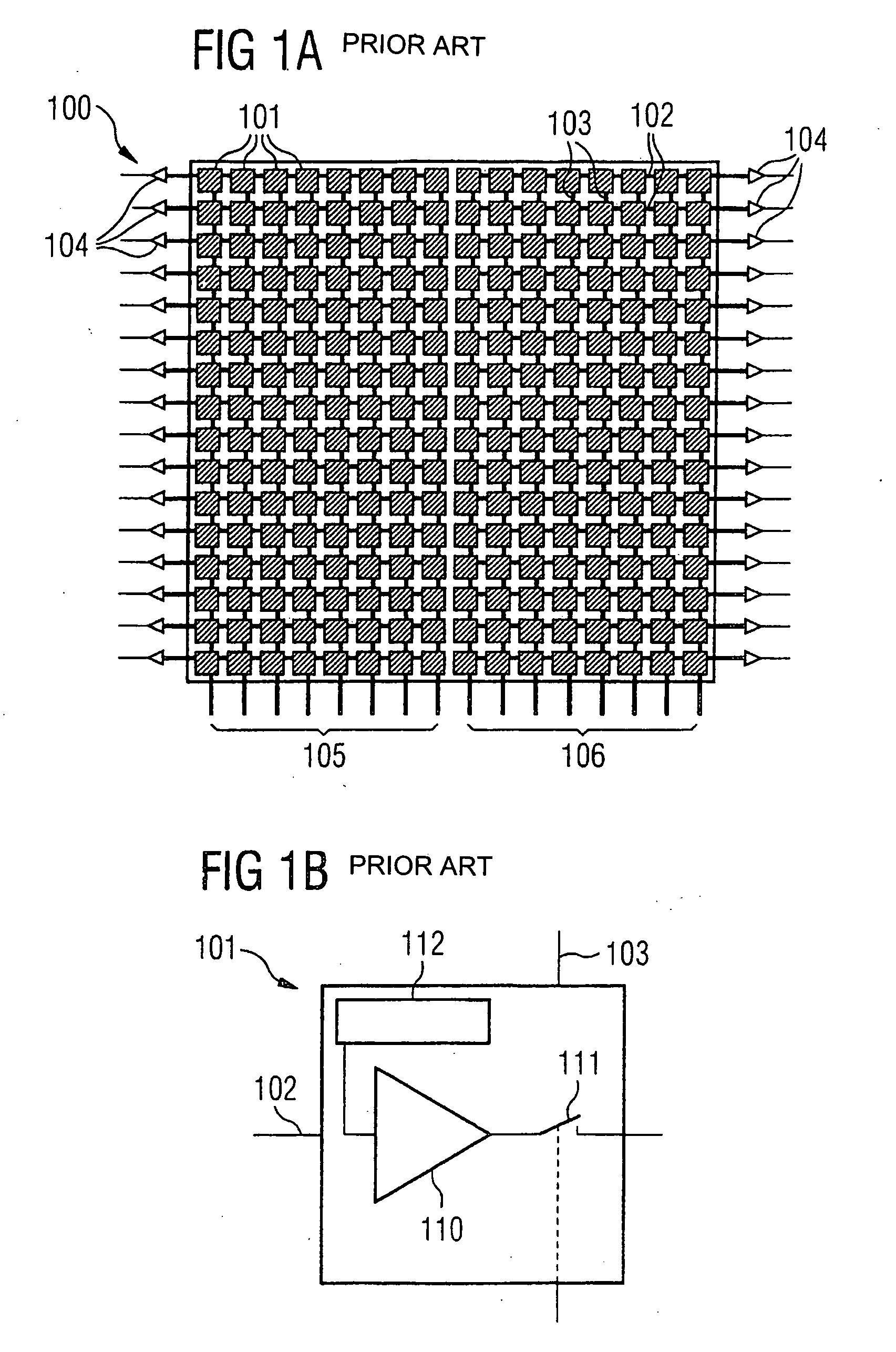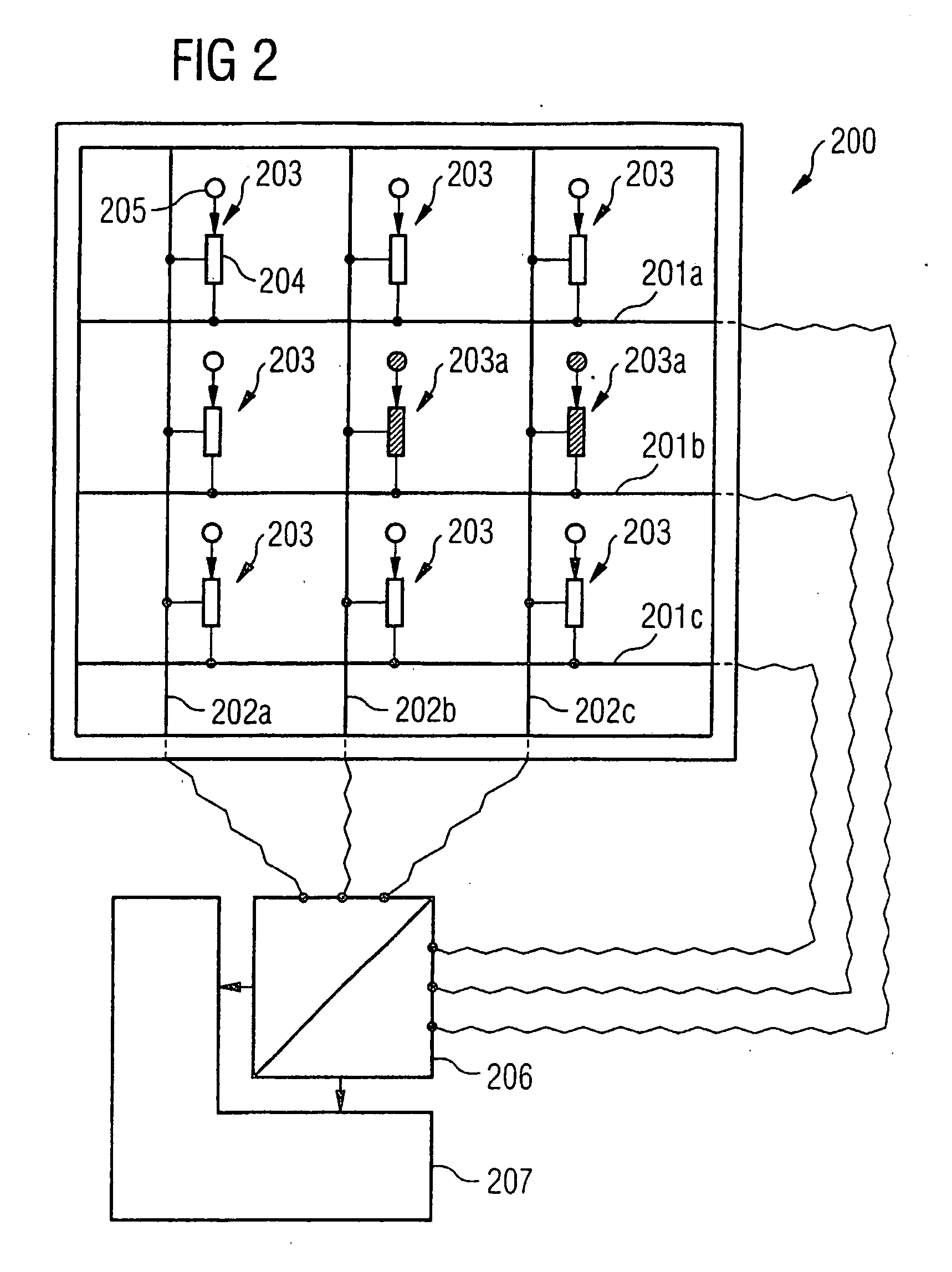Sensor arrangement
a sensor and arrangement technology, applied in the field of sensor arrangement, can solve the problems of nm sensor electrodes being read individually, signal transmission, and the principle encountering its limits, and achieve the effects of improving the temporal resolution of the sensor arrangement, increasing sampling rate, and high susceptibility to interferen
- Summary
- Abstract
- Description
- Claims
- Application Information
AI Technical Summary
Benefits of technology
Problems solved by technology
Method used
Image
Examples
Embodiment Construction
[0079] A description is given below, referring to FIG. 2, of a sensor arrangement in accordance with a first exemplary embodiment of the invention.
[0080] The sensor arrangement 200 shown in FIG. 2 has three row lines 201a, 201b, 201c arranged in a horizontal direction, three column lines 202a, 202b, 202c arranged in a vertical direction, and nine sensor arrays 203 arranged in the crossover regions between the three row lines 201a, 201b, 201c and column lines 202a, 202b, 202c, with a coupling device 204 for electrically coupling a respective row line 201a, 201b or 201c to a respective column line 202a, 202b or 202c and with a sensor element 205 assigned to the coupling device 204, the sensor element 205 being set up in such a way that the sensor element 205 influences the electric current flow through the assigned coupling device 204. Furthermore, the sensor arrangement 200 has a means 206 which is electrically coupled to a respective end section of the row lines 201a, 201b, 201c an...
PUM
| Property | Measurement | Unit |
|---|---|---|
| Angle | aaaaa | aaaaa |
| Angle | aaaaa | aaaaa |
| Flow rate | aaaaa | aaaaa |
Abstract
Description
Claims
Application Information
 Login to View More
Login to View More - R&D
- Intellectual Property
- Life Sciences
- Materials
- Tech Scout
- Unparalleled Data Quality
- Higher Quality Content
- 60% Fewer Hallucinations
Browse by: Latest US Patents, China's latest patents, Technical Efficacy Thesaurus, Application Domain, Technology Topic, Popular Technical Reports.
© 2025 PatSnap. All rights reserved.Legal|Privacy policy|Modern Slavery Act Transparency Statement|Sitemap|About US| Contact US: help@patsnap.com



